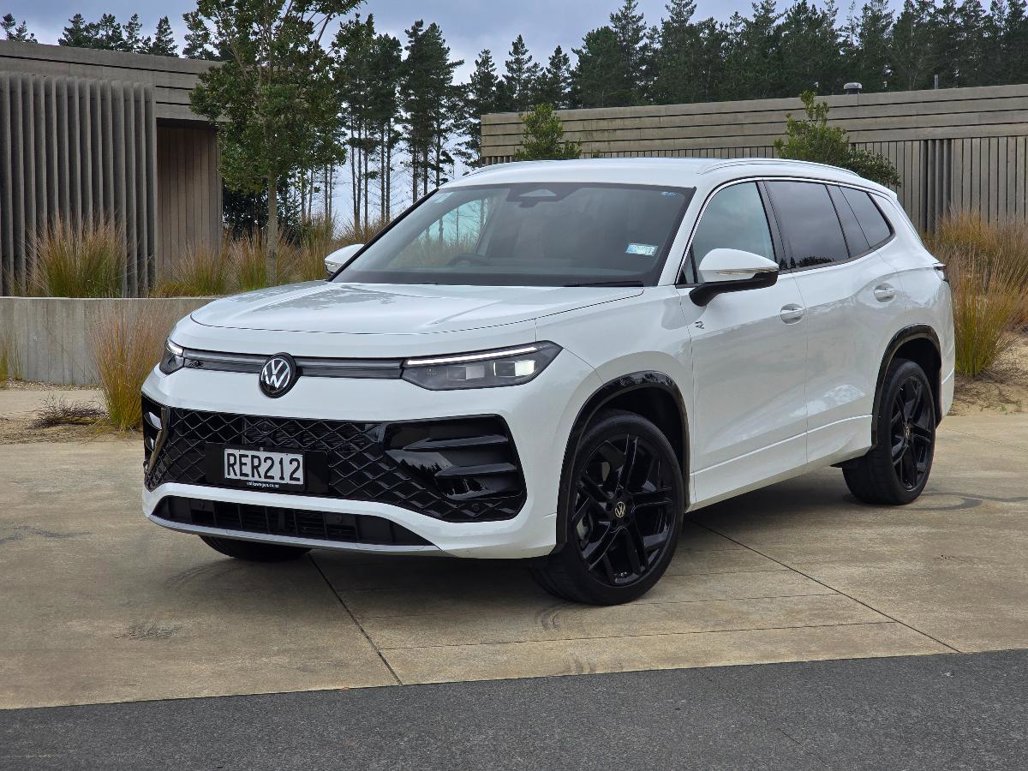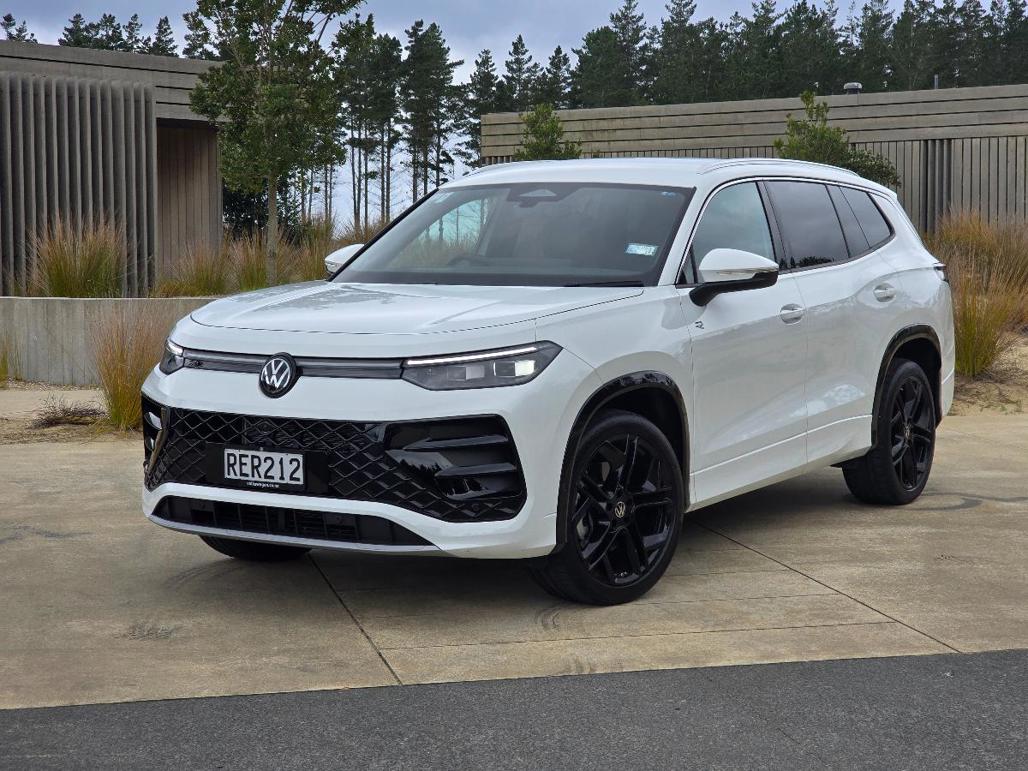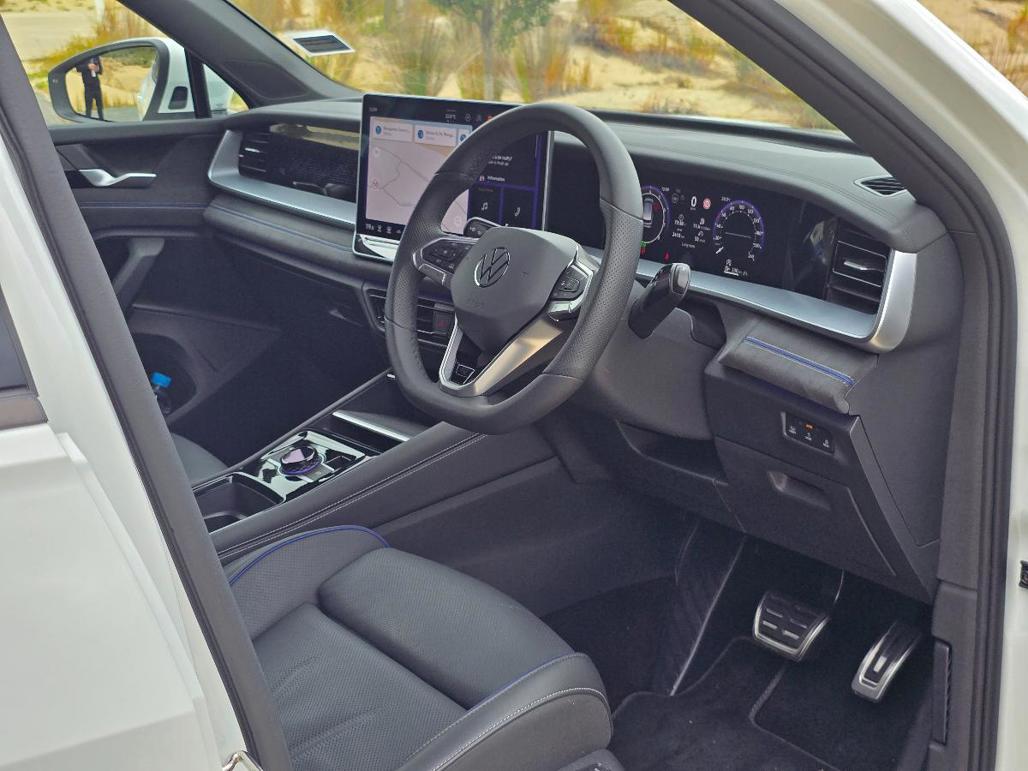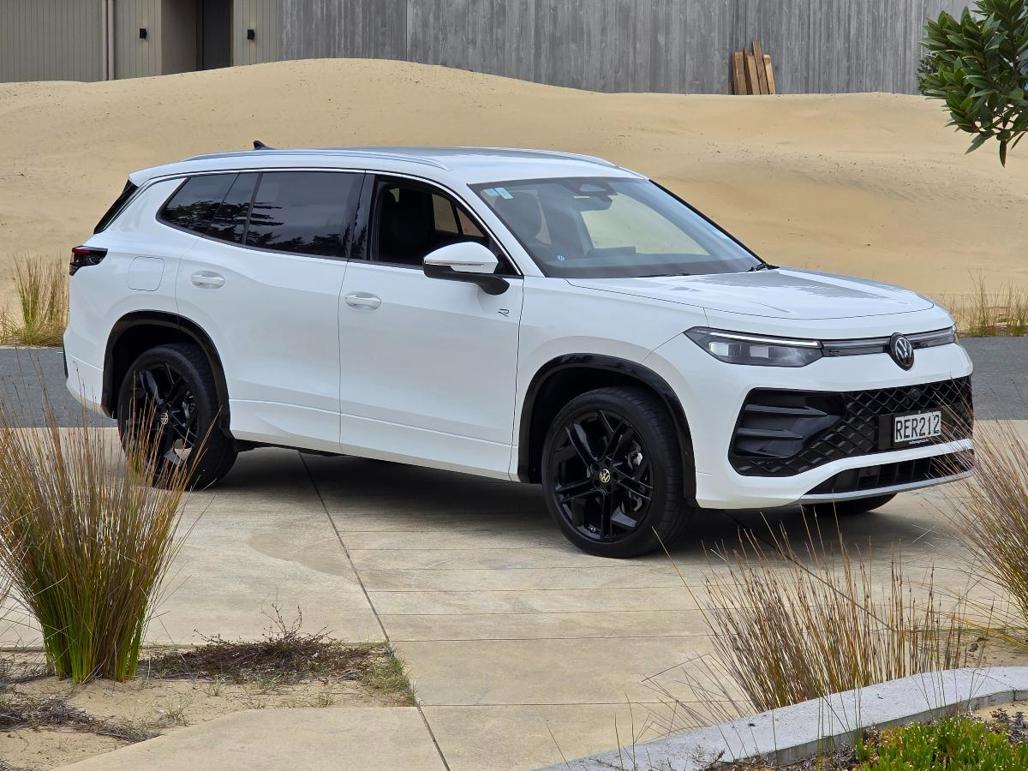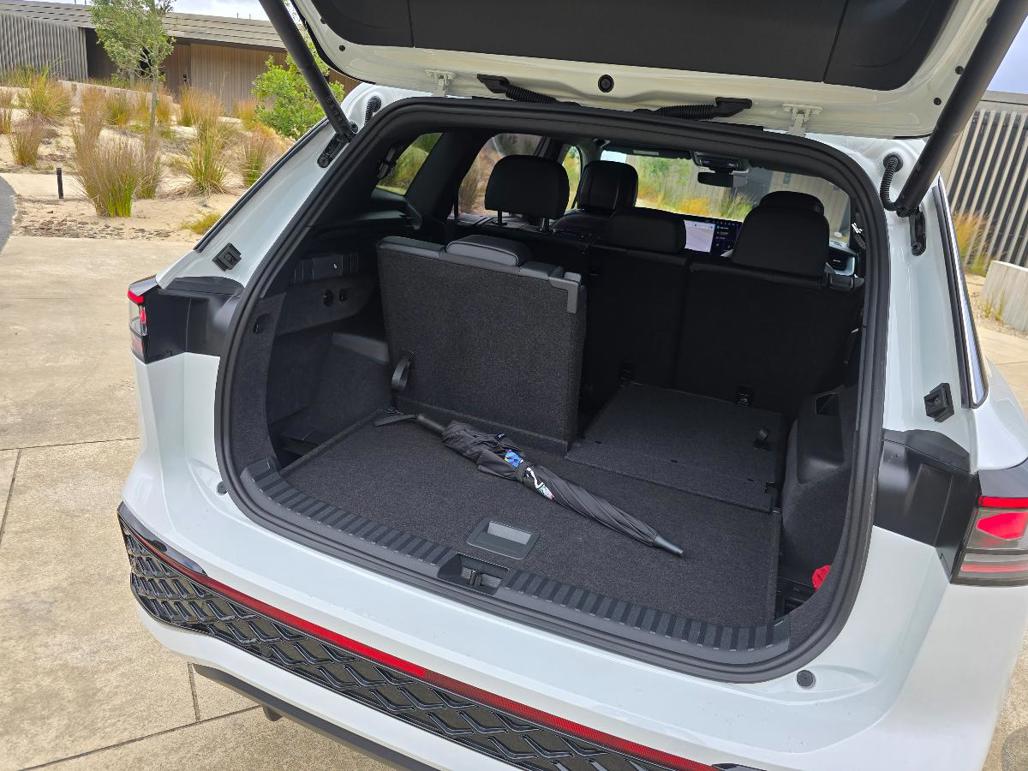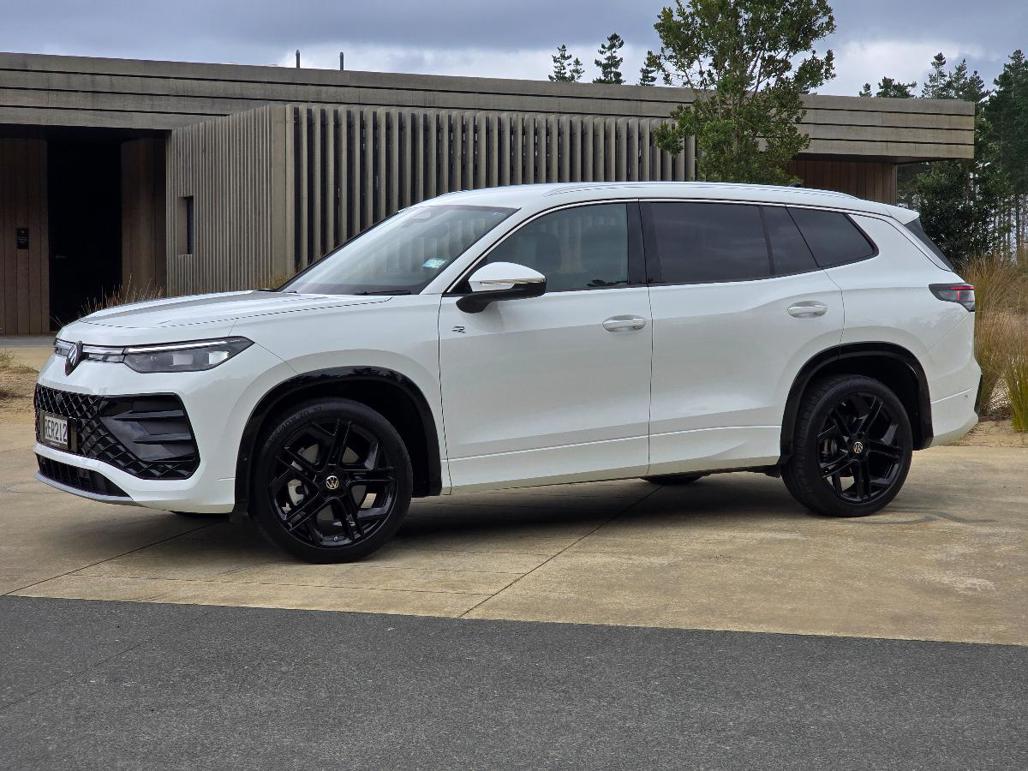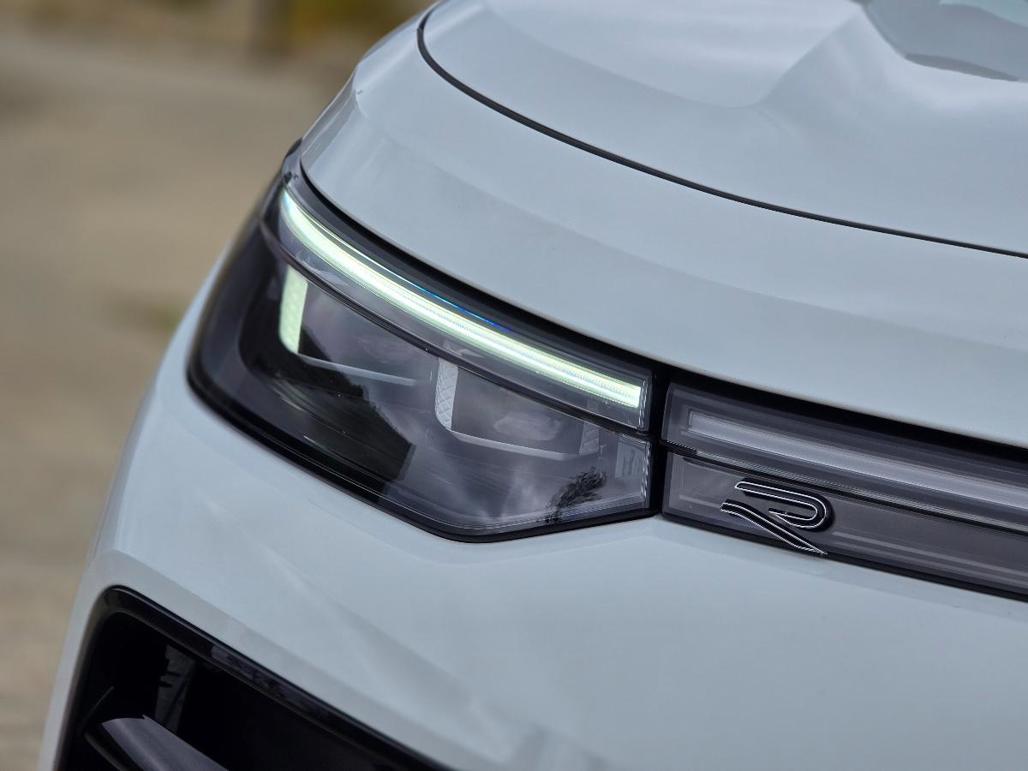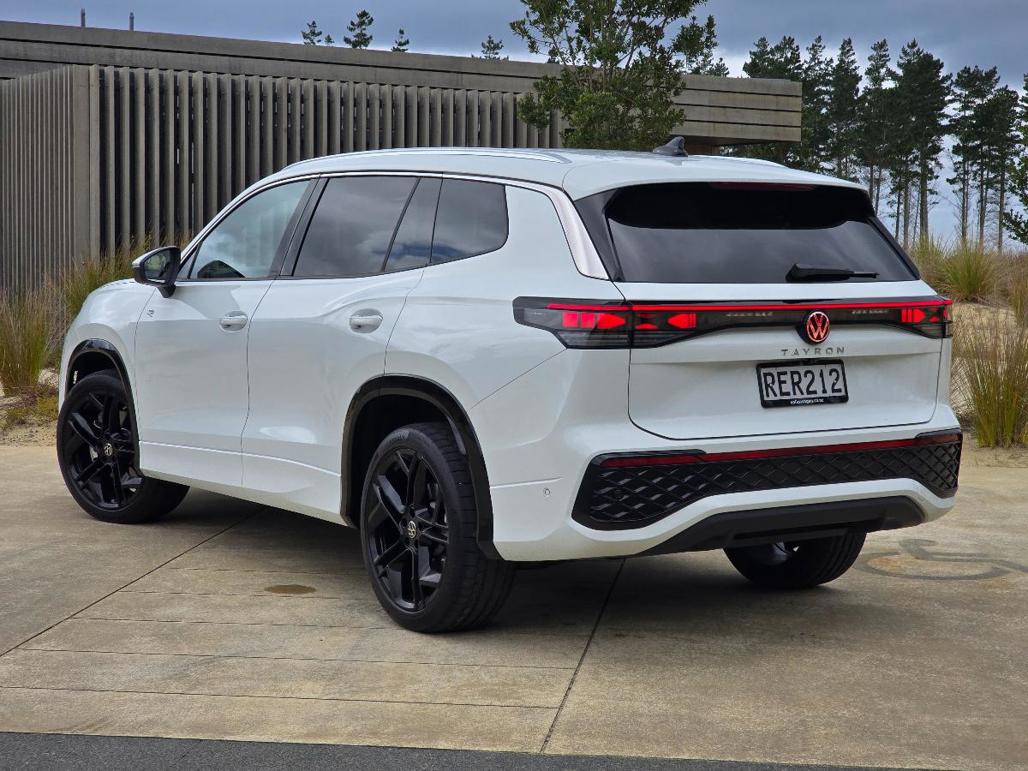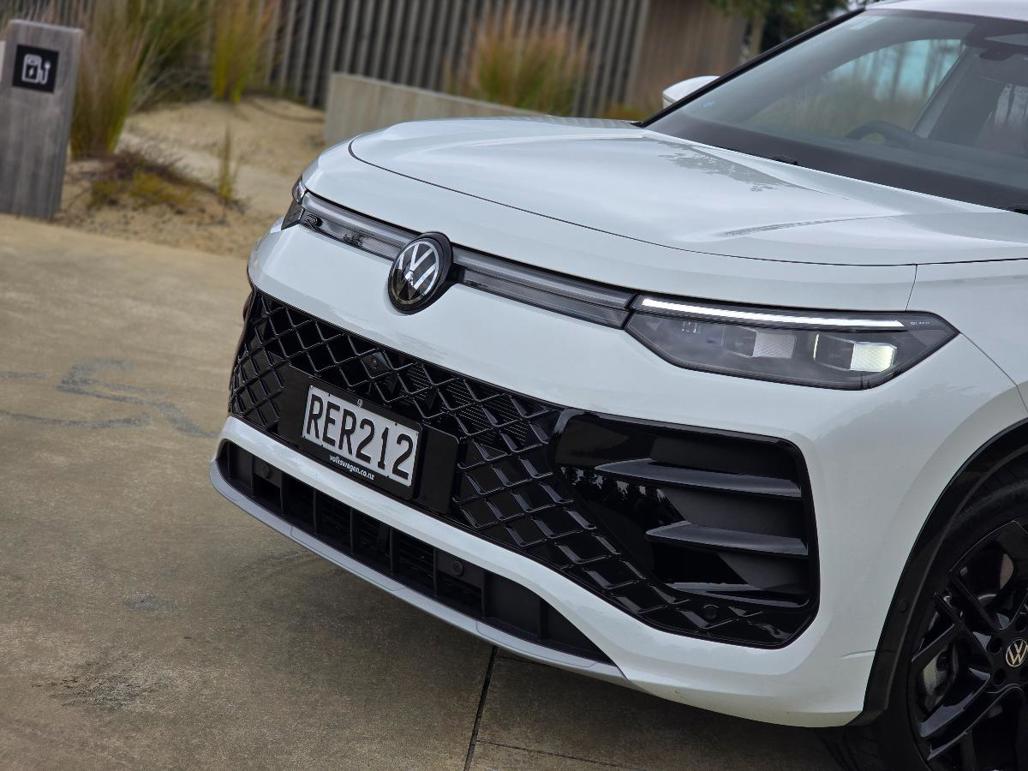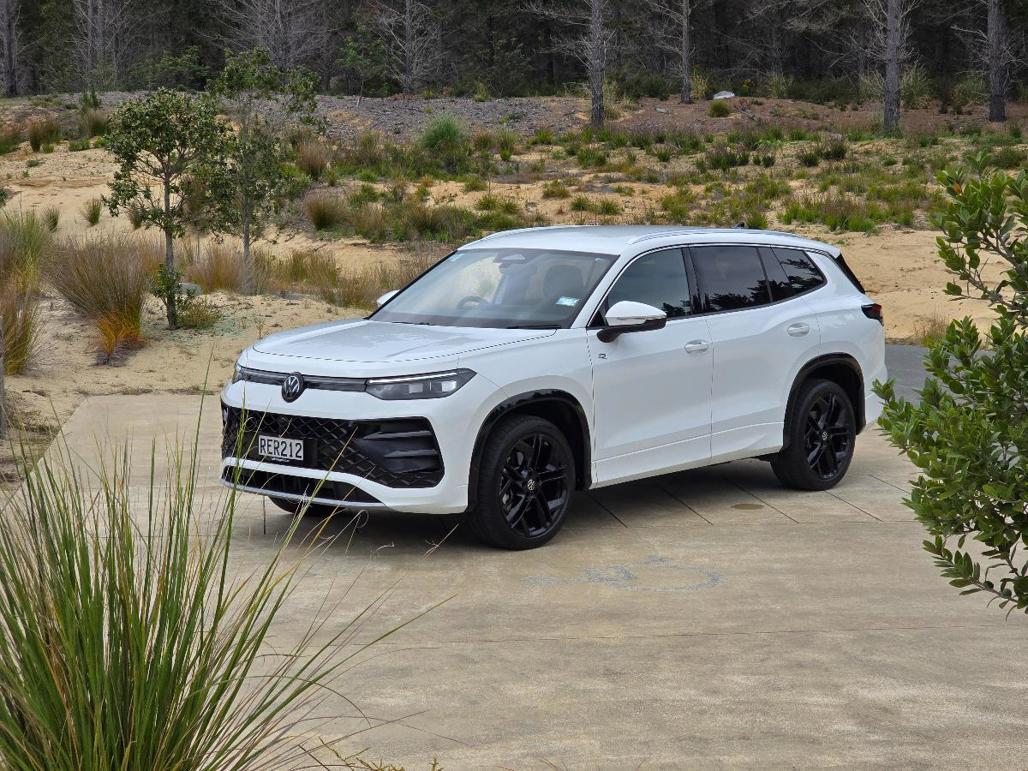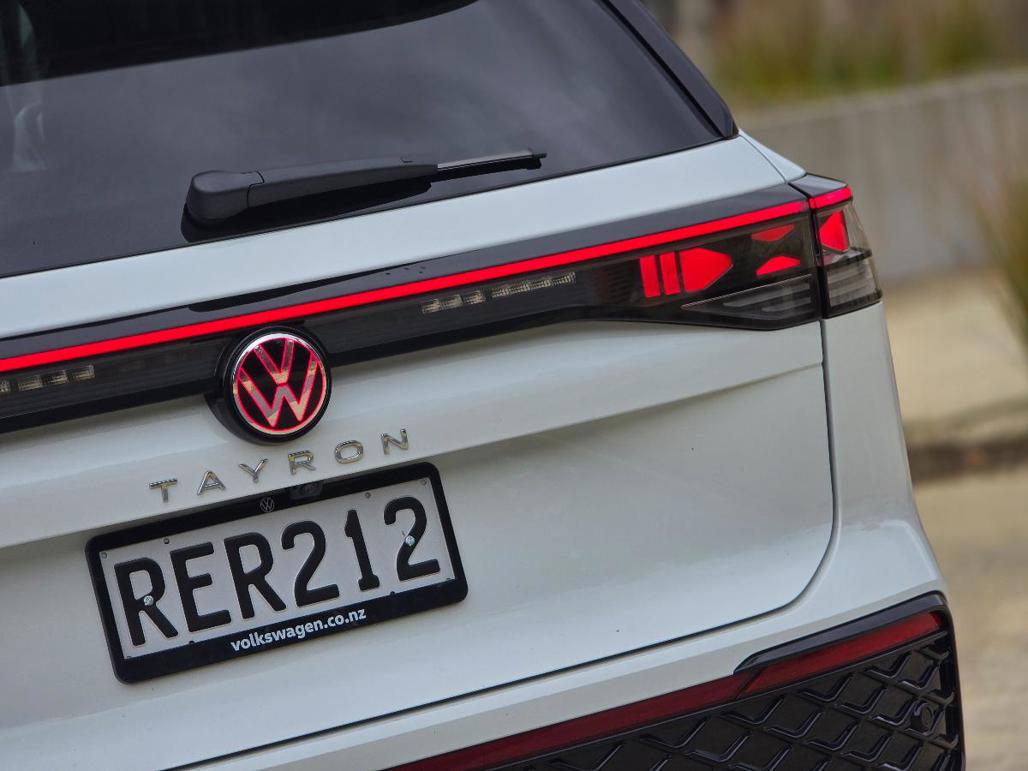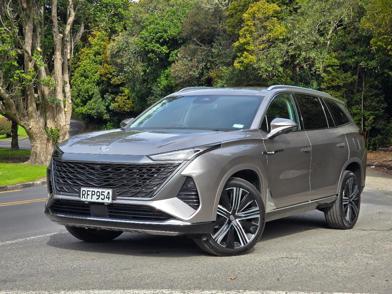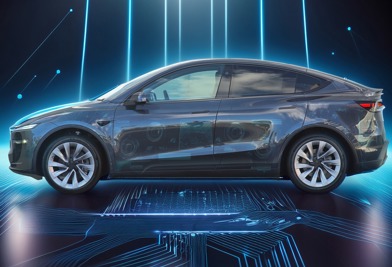What’s this new car all about then?
While the Volkswagen Tayron lands at the same time that the company’s large SUV, the Touareg, is entering the end of its run, it isn’t a replacement for the Touareg. Rather, the Tayron replaces the Tiguan Allspace.
Why? That would be because while the Allspace was a simple concept (basically a longer Tiguan with 7 seats) the name limited it somewhat, so during the development of the new Tiguan, the decision was made to spin the Allspace off as a separate model with a new name; Tayron.

The company says that by establishing Tayron as a separate model, it can give it a "unique position" in the market, distinct from the Tiguan and functioning as a bridge between the Tiguan and the flagship Touareg, or whatever replaces it.
As such, the Tayron is based on the Tiguan’s FWD platform but, while there are FWD models available in global markets, it will only land here in AWD form, with both models available at launch - Elegance and R-Line - using different engines, but the same AWD drivetrain.

The Elegance uses a 150kW/320Nm version of Volkswagen’s 2.0-litre four-cylinder turbo petrol engine that drives the wheels through a seven-speed dual clutch transmission, while the R-Line ups this to a 195kW/400Nm version used in the Golf GTI, again hooked up to the seven-speed DSG.
Because the Tayron was developed as a parallel program alongside the third-generation Tiguan, it allowed for deliberate differentiation in exterior and interior design, as well as overall market positioning, with the Tayron now positioned as a more premium vehicle than the Tiguan.
As such, production of the seven-seat SUV has been taken back to Europe - while the Tiguan Allspace was built in Mexico, the new Tayron is engineered and manufactured in Wolfsburg, Germany.

While the exterior is still very much a Volkswagen design, the Tayron is distinguishable from the Tiguan thanks to a significant number of differences, including a flatter bonnet, unique lighting (both the headlight and taillight designs are entirely different) to give the Tayron its own visual signature day and night, squared-off wheel arches, and illuminated badges, front and rear: The Touareg debuted an illuminated rear badge, the Golf later introduced one on the front, but the Tayron is the first Volkswagen to feature them on both the front and rear.
Inside the obvious differences continue, with the Tayron getting an entirely new interior as well, with a dashboard that has a distinct "brace" design, creating a shelf-like element that wraps around the centre, contrasting with the flat dashboard of the Tiguan.

The Tayron also lifts a number of features and technology from the range-topping Touareg, including heated and massaging front seats that use the same 10-point pressure system technology found in the flagship SUV.
The Elegance model comes standard with cloth upholstery, with an optional upgrade to Vienna leather via a Touring Pack, while the Vienna leather is standard on the R-Line. Other R-Line upgrades over the Elegance include ventilated front seats, a heads-up display, an upgraded 15-inch infotainment screen (from 12.9-inch), larger 20-inch alloy wheels, a 360 degree camera and an auto-dimming driver's side wing mirror.
Both models also come with a comprehensive suite of driver and safety assists, including forward collision warning with pedestrian and cyclist monitoring, lane keep assist, blind spot monitoring, front and rear cross traffic alert, and an exit warning system, as well as a new driver monitoring system.

How much is it?
The Elegance lands at $78,990, while the R-Line drops at a substantial $96,990, both of which represent a significant increase on the Tiguan Allspace, but then the levels of equipment and sophistication are also significantly higher in the Tayron.
What’s it like to drive?
Pretty much exactly like you would expect it to be; a slightly longer Tiguan. Now, this is not meant to be negative or in any way dismissive of the Tayron, because the Tiguan is a rather excellent SUV to drive, with the responsiveness and agility of a Golf blended with the larger size and comfort of a medium SUV.

And the Tayron possesses the same qualities, but with an added level of luxury and sophistication thrown in. Volkswagen's positioning of the Tayron as a bridge between the Tiguan and Touareg has extended to its ride and handling, with the middle child feeling as distinctively agile and responsive as the front-wheel-drive-based Tiguan, but a compliant, composed ride that feels more like the Touareg's RWD-based underpinnings.
What’s the pick of the range?
While the R-Line is generously equipped as standard, the Elegance still packs a very high level of standard kit, despite its $18k lower price and, as such, represents a more convincing value-for-money package.

While the R-Line boasts the gruntier 195kW GTI engine, the reality is that the Elegance's 150kW version is perfectly capable of pushing the Tayron along at a convincing rate, and is arguably quieter and more refined in the process (although the difference is very minimal).
Put it this way, you certainly don't feel like you are missing out on much in the Elegance.
What other cars should I consider?

The most obvious competition for the Tayron come in-house, with the Skoda Kodiaq lining up AWD models at $72,300 (for the diesel Selection TDI model) and $95,000 (for the petrol RS TSI model) respectively, putting it closely on par, apart from the fact that the Skoda offers the diesel option.
The Kia Sorento ($64,990 to $86,990) and Hyundai Santa Fe ($69,990 to $99,990) are obvious alternatives in the seven-seat segment, as are the Mazda CX-80 ($74,990 to $83,990) and CX-90 ($92,990), as well as the Toyota Highlander ($72,990 to $89,990).
And given that the R-Line starts crossing the $100k barrier once you start adding options, fully-electric offerings like the Kia EV9 (that starts at $110,790) can also start coming into play.

